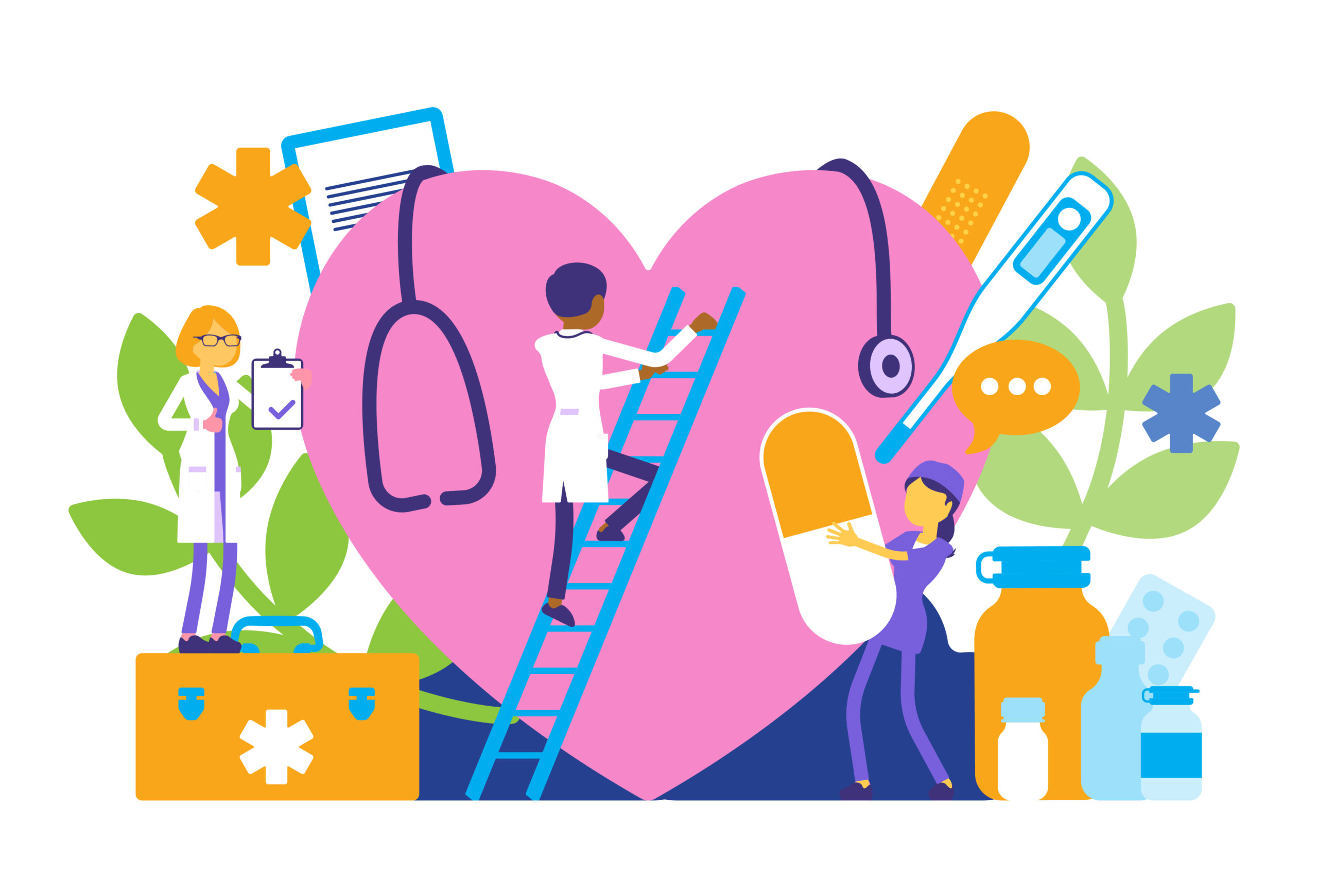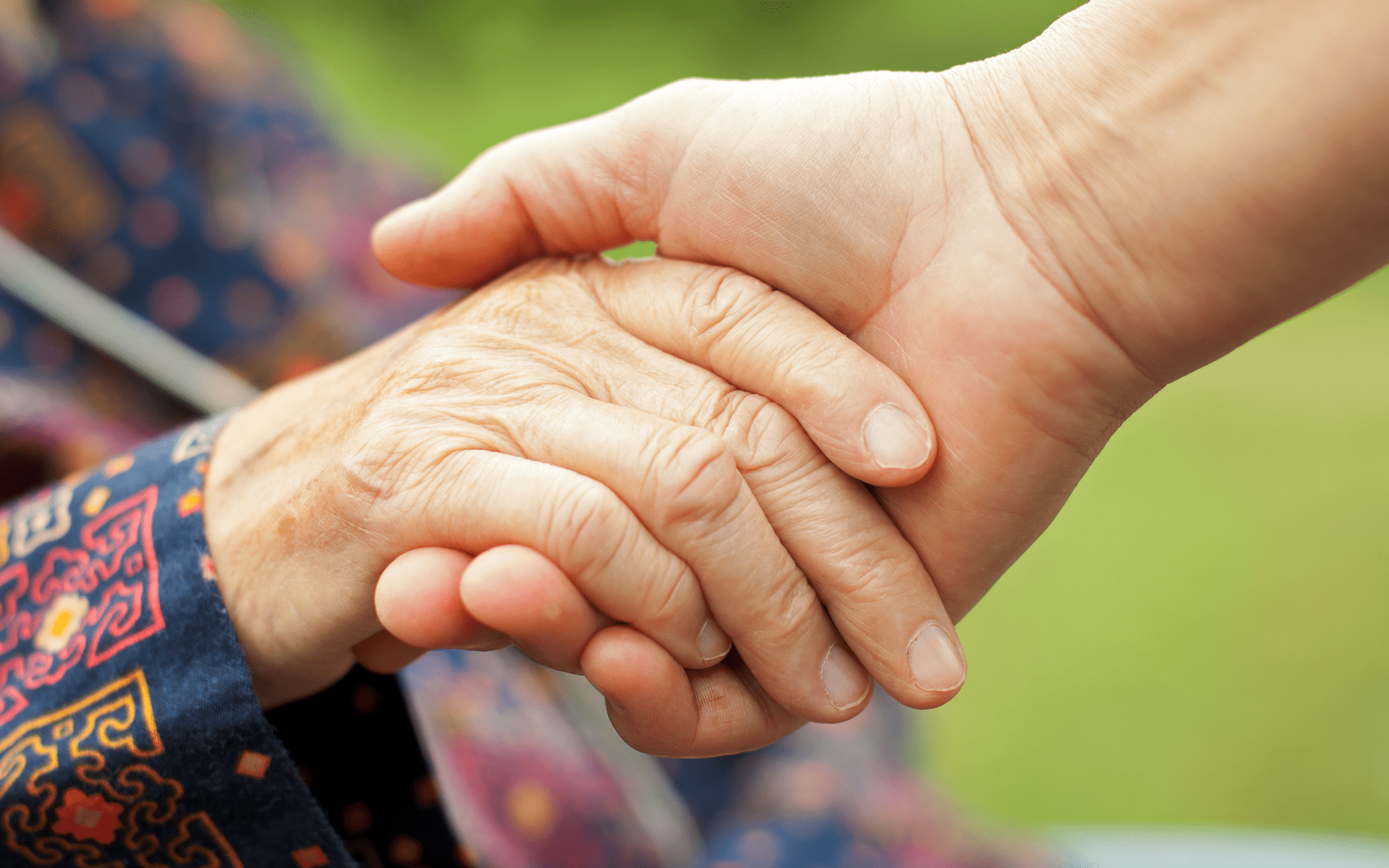
What Is Burnout?
The World Health Organization (WHO) defines the phenomenon of burnout as being characterized by three things:
- Feelings of exhaustion
- Reduced productivity at work
- A sense of detachment from one’s job
We know it when we feel it. It’s the overwhelming to-do list, the mental load and physical exhaustion, and the inability to find joy in our daily lives.
In essence, burnout can feel a lot like depression, but the key difference is that it relates directly to the work we do. The WHO states that burnout can’t be applied to describe experiences we have outside of an occupational context, but it will be interesting to see how this official definition changes after COVID-19.
Is It a Bad Day or Is it Burnout?
There’s a difference between a period of bad days, which we’ve all encountered, and burnout. Burnout is something that creeps up on you. Imagine a leak in your bathroom pipe that has been dripping unassumingly behind the walls for months or even years. One day, the pressure becomes too much, the pipe ruptures, and that water comes bursting through the walls with devastating results.
It’s when every day seems riddled with strife and anxiety until you reach a tipping point where all things seem futile and you find yourself at the point of giving up. To put it in simpler terms: Burnout is a bad day every day.
Signs and Symptoms of Burnout
So, how do you know if you’re burnt out or, perhaps, getting close? There are three telltale burnout symptoms that most people affected find themselves facing:
- Emotional exhaustion, mental exhaustion, and physical exhaustion: People with burnout usually describe experiencing a complete lack of energy that manifests itself physically. Some are even diagnosed by their doctors with Chronic Fatigue Syndrome. Regardless, this troubled state results in a debilitating feeling of dread for what the day will bring, even on days when no major work or personal responsibilities loom. Basic tasks and even things that would normally provide joy become chores. Surprisingly, though exhausted, people with burnout often have trouble sleeping to the point they develop chronic insomnia. This inability to rest and recharge makes it harder to concentrate and focus, which eventually shows up in physical forms, such as panic attacks, chest pain, trouble breathing, migraines, and stomach pains. These symptoms become so severe and disruptive that it becomes impossible to cope with the challenges (and even pleasures) of daily life.
- Detachment and cynicism: Those suffering from burnout tend to become perpetual pessimists. They go well beyond seeing the glass as half empty. For them, the glass is totally empty and there’s zero reason to try and fill it. Feelings of worthlessness, hopelessness, and an inability to accept consolation from others or connect to the empathy offered by others is commonplace. They retreat into themselves and resist socializing. Eventually, fueled by a desire to shut everyone out, they move to a state of total isolation and justify their retreat with a cynical approach to life, family, friends, work, you name it.
- Feelings of self-doubt and ineffectiveness, lack of accomplishment: Sometimes people experiencing burnout are still capable of going through the motions. They still make it to the office. They still get the job done. They still join the family for dinner and handle the household duties. However, they do it in an almost robotic manner. There is no zest, no pleasure, and, therefore, performance suffers. They find ordinary tasks take longer. They procrastinate and invent excuses as to why they’re less effective. They get frustrated at things that were once easy and now seem overwhelming. They’re physically present and on some level functioning, but emotionally and mentally, they’re a shell of their former selves and are keenly aware of their inadequacy. This, as you can imagine, only perpetuates those feelings of exhaustion and detachment.
Now before you come to the immediate conclusion that you’re suffering from all the above, drop your shoulders and take a breath.
We have all experienced one or more of the signs of burnout in our lives. In fact, they seem so familiar to us because in various degrees they are simply a part of dealing with everyday life and its stresses. Remember, the difference between a difficult period and burnout is a matter of a few degrees.
Job Burnout: How to Spot it and Take Action
According to the American Institute of Stress, 80% of people feel stress at work. A March 2021 survey of US employees found that 52% of respondents feel burned out, and more than two-thirds (67%) report the feeling has worsened over the course of the pandemic.
Burnout is not so much about the specifics of your job. It’s a combination of the factors that create stress in a workplace and the choices we make (and don’t make). Being aware of the external factors that contribute to burnout (workplace culture, lack of support from management, unmanageable workloads) and approaching the stressors with mindfulness and clear purpose can transform our relationship with stress—and put work in its place. To start, here are some actions you can take to start redefining your relationship with work.
- Define the core issues: Can you pinpoint what causes the overwhelm? Is it a capacity issue? Do you have more work than hours to complete it? Is it a skill issue? Is there a gap in the skills you have versus what is required? Is it a communication issue? Are you able to share what’s causing stress? This is your first step: Collect all the relevant data so you know where to focus solutions.
- One step at a time: You didn’t arrive at burnout overnight and the process to undo habits will take time. Pick one behavior right now that you can consciously begin to shift. For example, create clear start and end times for work each day. The flexibility that technology and remote working offer can be overwhelming and contribute to burnout if boundaries between work and non-work time are not well-established.
- Befriend your body: How do you hold stress? Maybe you grind your teeth at night, experience a knot of tension in your neck, or have trouble staying asleep. Now think about what helps you to unwind. Taking a lunchtime walk outside, going for a post-work run, as examples. Regularly tune into your body so that you can recognize the earliest signs that stress is present, and take the preventive actions you’ve identified to work through it before it overwhelms.
- Share what you need: Professional stress can be incredibly isolating; we often withdraw in order to “deal with” work issues on our own. But letting the people in your life know what you need to feel supported is essential for putting things in perspective and managing stress. None of us can do it all alone. Your colleagues and loved ones won’t know how to help if you don’t tell them how you’re feeling.
Signs of Burnout at Work
Research suggests that if we attempt to repress how our work affects us—how our work affects our emotional health—it can lead to increased stress, less productivity, heightened depression and anxiety, job burnout, and may even lead to a greater risk of heart disease. There’s even some recent research to suggest that emotion suppression is connected to an increased risk of breast cancer. To say the least, not metabolizing our emotions is making us sick.
How to Recognize Work Burnout and Bottled-Up Emotions
One of the simplest ways to notice things aren’t alright is to note how you’re feeling Sunday night. Ask yourself the following questions:
- Do you dread walking into work the next day?
- Do you hate the thought of turning on your computer and getting started?
- Have you noticed that you aren’t motivated to work on projects or simply don’t put the same amount of time and energy into things as you once did?
If you answered yes to any of these questions, there’s a good chance that these feelings stem from attempting to stifle anger, upset, hurt, or other difficult emotions.
A Mindful Response to Occupational Burnout
Caregiver burnout, teacher burnout, physician burnout, parental burnout, mental burnout, emotional burnout, pandemic burnout, employee burnout, academic burnout—these are just some terms coming to the forefront of the wider conversation on burnout. Chances are, if you work a high-stress job, work anywhere within health care (or even know someone who does), or work as a caregiver, some of these issues are all too familiar. By cultivating an awareness of these warning signs of burnout, we have a better chance to work with it and recover from it—both on an individual basis and, importantly, across the spectrum of our workplaces.
Among the many necessary solutions for the burnout crisis, including organizational and policy changes, the practice of mindfulness has countless applications and proven benefits.
Mindfulness practice eases symptoms of burnout, while improving engagement, sense of meaning, and the ability to navigate difficult conversations and to feel empathy. The enhanced self-awareness and emotion regulation resulting from mindfulness practice also enhances teamwork and decision-making. Finally, mindfulness improves emotional intelligence, sleep, and overall resilience.
The benefits of mindfulness practice also extend to leaders and executives experiencing burnout and lead to improved focus, executive presence, strategic awareness, emotional-intelligence-based leadership skills, and effective communication.
How to Heal From Burnout
Just as it took time to develop burnout, it will take time to recover. Returning to a regular 40-hour workweek is usually not enough to make up for years of overworking yourself. Taking long chunks of time off, working part-time for a while, and learning new ways to cope with stress are often recommended solutions, but they’re not feasible solutions for everyone.
It is a long road back to a healthy, balanced life, and it starts with making incremental changes that protect your emotional and physical well-being. The earlier you start getting clear on what really matters to you, the better.
Recognizing Early Signs and Preventing Burnout
Prolonged stress can play a critical role in burnout, and experts agree mindfulness can ease stress naturally. Since cortisol is a stress-triggered hormone, how a person manages stress can affect whatever the condition is. Research shows that regular mindfulness practice can support the parasympathetic nervous system, as well as regulate the sympathetic nervous system, which reduces our threat sensitivity and grounds us through daily stress. “When we take time to stop and listen to our inner experiences,” says Michael Mantz, a psychiatrist in Santa Barbara, California, “we become more attuned to when our bodies are out of balance, and can respond efficiently.”
6 Ways to Balance Your Nervous System
1) Breathe
One method is the ocean breath: “You partially close the back of the throat on your exhale, which gently lengthens its duration,” says Mantz. He offers two guides: Pretend you’re fogging up a mirror, or breathing like Darth Vader. Increasing the length of your exhale strengthens the parasympathetic nervous system and eases an overactive fight- or-flight response.
2) Be Present
Learning to see thoughts as just thoughts, and not threats, means you can step out of panic mode and your adrenals will be activated less frequently. Linda E. Carlson, professor of oncology at the University of Calgary says to envision a river with two options: You can be in the water, swept away with the thoughts, or you can be on the bank, simply watching the river flow by.
3) Scan Your Body
Start at your head and progressively move toward your feet, paying attention to the sensations in each area of the body. This is another way to strengthen the parasympathetic nervous system and keeps you grounded in your body, Mantz says.
4) Move
Physical exercise helps the brain shift out of stress mode and activates adrenal hormone production, says Rael Cahn, an assistant professor of psychiatry at the University of Southern California who’s researched how yoga and meditation can affect the brain and cortisol levels. But a moderate pace is best, since intensity can tax the glands. Keep monitoring your body’s response so you can adjust as needed.
5) Find Calm
Seated yoga postures and meditation help you deal with low-level stress and lessen reactivity, so that “the body is more poised to respond,” Cahn says. Research shows practicing yoga can help regulate the sympathetic nervous and HPA systems.
6) Sleep Well
You can reestablish your circadian rhythm by waking and going to bed at the same times every day. Aim to get 15 to 20 minutes of sunlight exposure within three hours of waking up: “The light is your body’s natural alarm clock,” Mantz says. And avoid bright lights for at least two hours before bed. “It’s like drinking coffee at 8 p.m.,” he says. “Your body is exhausted but your brain is still on and wired.”
How to Navigate Your Way Out of Burnout
While burnout is a societal problem that calls for systemic change, these individual coping tools can help us take back some of our agency.
- Commit to a daily meditation practice. This will help you reduce daily stress, become more in tune with your emotions, and hear what your heart, mind, and body are telling you.
- Take at least two consecutive days off to detach from work, family, and other stressors. This can be helpful if you notice the signs of burnout are particularly persistent and troublesome. If taking time off is not available to you, take as much time as you can to detach—even if it is an hour or two. Ask yourself if you’ve ever felt this way before; see if you can understand what led you to this point, and try to determine how long you’ve been feeling this way. Look to the past to understand if it’s just stress or if it may be more than that.
- Take time for yourself when you can. If possible, find a place where you can’t do any work, take work-related calls, or even check emails or texts. If being in nature brings you peace, immerse yourself in it. If you need a break from your family, find a way to make it happen. Sleep, nourish yourself with healthy food, read books or listen to podcasts, or maybe, don’t do a thing.
- Embody your emotions through movement. Vibration, movement, and sound stimulate our vagus nerve—the nerve that connects our brain to organs throughout our body. It also performs key functions for our parasympathetic nervous system, helping us to move from “fight or flight” to “rest and digest.” Activities to stimulate the vagus nerve include deep and slow breathing (letting your exhale be longer than your inhale can have an especially soothing effect), singing, humming, or chanting, and body movement.
- Give yourself a moment of emotional release. Crying is an underrated strategy for helping our bodies cope with stress hormones, and scientists have identified that “emotional tears” (rather than tears that may fall in cold weather or because of dust in the eye) may have a different chemical composition and can trigger the body to release oxytocin and endorphins. These are the loving and calming hormones that ease our physical and emotional pain.
- Seek professional help or, at the very least, reach out to discuss your concerns with your inner circle. While Kaylee Friedman, a licensed associate counselor in New Jersey who uses mindfulness-based techniques with her clients, believes everyone can benefit from therapy, she notes that a therapeutic relationship may be particularly helpful when your ability to function is curtailed by “feelings of anxiety, lack of motivation, feeling lost or hopeless, social issues, dealing with oppression, relationship struggles, grief, family crisis, unprocessed trauma, etc. If you’re spending at least an hour each day worrying or thinking about these issues and they cause you to feel distracted or to under-function in important roles in your life, you’d probably benefit from therapy.”
physician burnout
How Integrity Can Heal Burnout
Evidence from healthcare worker communities shows how strengthening our moral resilience, with support by mindfulness, can help us avoid overwhelm at work.
Read More
Three Signs of Burnout in Healthcare—and the Role of Mindfulness in Healing the System
Cardiologist Jonathan Fisher unpacks the need to be aware of what the epidemic of burnout looks like, and how mindfulness can serve healthcare providers.
Read More
Mindfulness for Healthcare Professionals
Accessible mindfulness and mindful healthcare practices, meditations, and resources for healthcare workers.
Read More
caregiver burnout
Caregivers, Let’s Talk About Caring for Yourself
As the caregiver of a loved one with chronic pain, you may experience painful emotions like grief, anger, or feeling stuck. Christiane Wolf explores how you can create the space to extend compassion to yourself, while building resilience to meet the challenges you face.
Read More
5 Tips to Support the Caregiver in Your Life
Tips and a few resources to support the caregiver in your life.
Read More
Caring for Yourself While Caring for Another
Three unhelpful habits to watch out for when you’re taking care of a loved one, and three ways to overcome them with mindfulness.
Read More
stress and burnout
Are Your Habits Making You Stressed?
Mastering the art of mulitasking can have detrimental effects on your well-being. Here are three ways to unhook from your addiction to doing.
Read More
The Importance of a Breakdown
A breakdown can be inconvenient, but it comes with an important message. In this video from School of Life, philosopher Alain de Botton explains how breakdowns provide you with an opportunity to listen to what your body and mind really need.
Read More
Battling the Physical Symptoms of Stress
Your body reacts the same way to a harsh email and a saber-toothed tiger.
Read More










